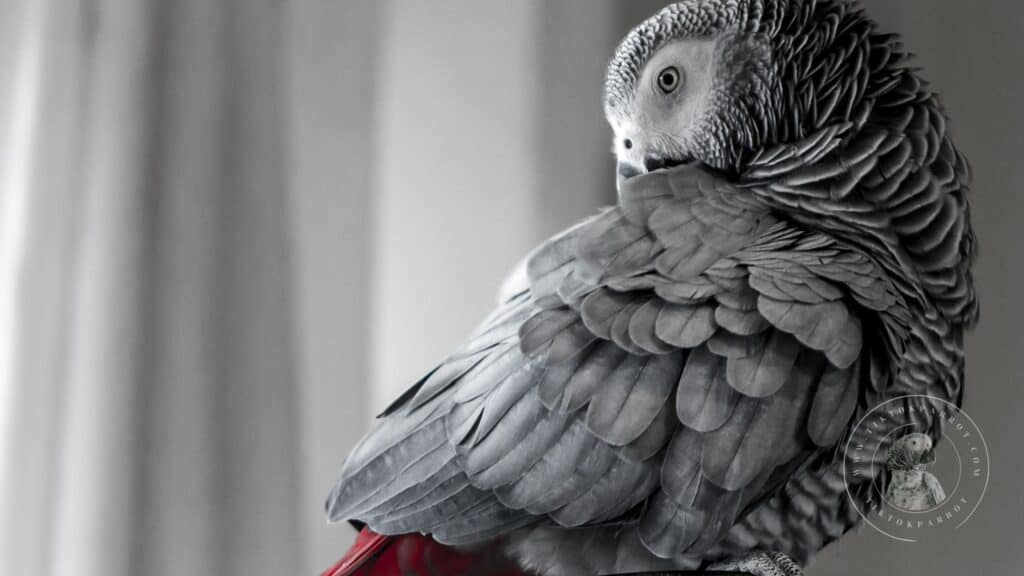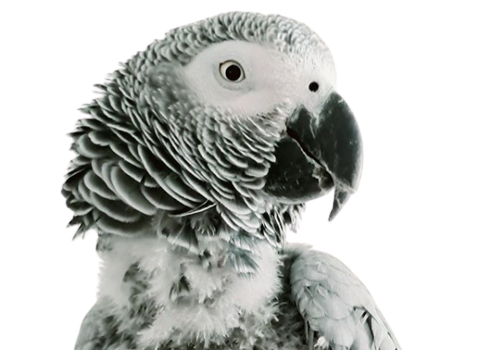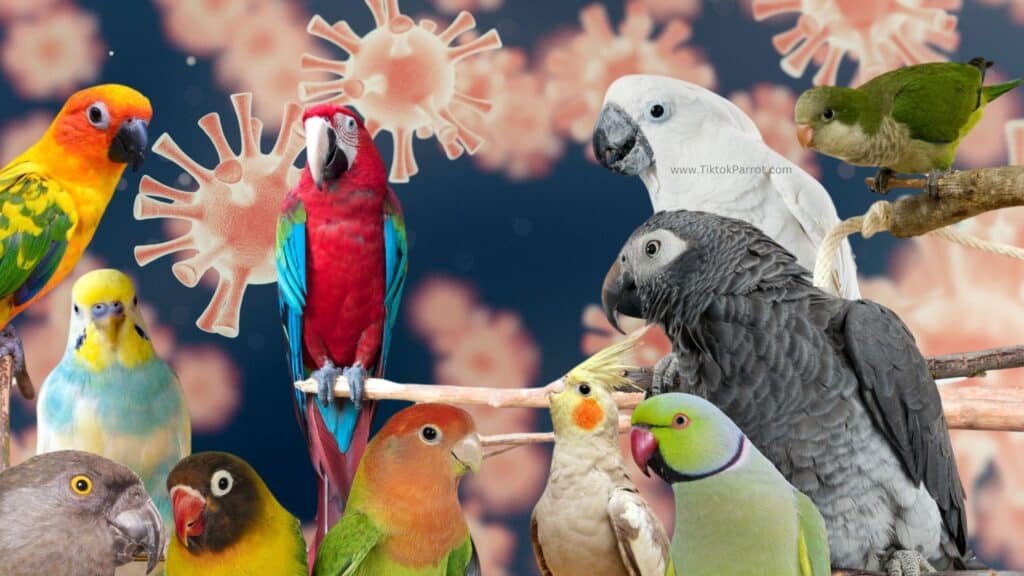Hey there, fellow bird lovers and parrot enthusiasts! Welcome to TiktokParrot, your ultimate destination for all things feathered and fabulous! Whether you’re a proud parrot parent or just a curious bird watcher, we’re thrilled to have you join our flock. Get ready to spread your wings and dive into the colorful world of our avian companions – it’s going to be a chirp-tastic adventure!
Discover the secrets of Psittacosis – the bird flu’s mischievous cousin! Learn symptoms, treatment, and how it affects birds and humans.
Unraveling the Mystery of Psittacosis: A Bird’s-Eye View

Alrighty, folks, grab your coffee, sit back, relax and get ready for a wild ride through the wacky world of Psittacosis – or as we like to call it, the bird flu’s mischievous cousin. Picture this: you’re chilling with your feathered friend, sharing a laugh and maybe a cracker or two, when suddenly, disaster strikes. Your buddy starts acting a bit off – sneezing, coughing, and looking downright miserable. Cue the dramatic music, because things are about to get wild.
But fear not, my feathered friends, for we’re here to shine a light on this feather-ruffling phenomenon. Psittacosis, also known as “parrot fever,” is caused by a sneaky little bacteria called Chlamydia psittaci. It’s like the uninvited guest at the birdie party – barging in unannounced and causing chaos wherever it goes. From mild sniffles to full-blown respiratory distress, Psittacosis can turn your feathered friend’s world upside down faster than you can say “squawk.”
But here’s the kicker – Psittacosis isn’t just a problem for our fine feathered friends. Oh no, it’s a sneaky little bugger that can affect us humans too. It’s like the ultimate party crasher – showing up uninvited and leaving a trail of sniffles and sneezes in its wake. So, what’s a bird lover to do? Well, my friends, knowledge is power – and we’re here to arm you with all the information you need to keep yourself and your feathered friends safe and sound.
What are the symptoms of Chlamydia psittaci in birds?
Chlamydia psittaci, also known as psittacosis or avian chlamydiosis, is a bacterial infection that primarily affects birds but can also be transmitted to humans. The symptoms of Chlamydia psittaci in birds can vary depending on factors such as the species of bird, the severity of the infection, and the bird’s overall health. Common symptoms may include:
- Respiratory signs: Birds with Chlamydia psittaci may exhibit symptoms such as sneezing, coughing, wheezing, or difficulty breathing. Respiratory distress may range from mild to severe.
- Ocular signs: Infected birds may develop conjunctivitis (inflammation of the eye membranes), which can cause redness, swelling, discharge, and squinting.
- Nasal discharge: Birds may have nasal discharge, which can be clear, white, or yellowish in color.
- Decreased appetite: Infected birds may show a reduced interest in eating or drinking.
- Weight loss: Birds with Chlamydia psittaci may experience weight loss due to decreased appetite and the metabolic demands of fighting the infection.
- Lethargy: Infected birds may appear weak, lethargic, or depressed, with decreased activity levels.
- Diarrhea: Some birds may develop diarrhea, which can vary in severity.
- Fluffed appearance: Affected birds may appear fluffed up, with feathers puffed out, as they try to conserve body heat and energy.
- Neurological signs: In severe cases or if the infection spreads to the central nervous system, birds may exhibit neurological symptoms such as tremors, incoordination, or seizures.
It’s important to note that not all birds infected with Chlamydia psittaci will exhibit all of these symptoms, and the severity of the disease can vary widely between individuals. Some birds may be asymptomatic carriers of the bacteria, showing no outward signs of illness but still capable of transmitting the infection to other birds or humans.
If you suspect that your bird may have Chlamydia psittaci, it’s crucial to seek veterinary care from a veterinarian experienced in avian medicine for proper diagnosis and treatment. Chlamydiosis can be a serious disease in birds, and early detection and intervention are key to improving the bird’s prognosis and preventing the spread of the infection to other birds or to humans.
Is Chlamydia the same as psittacosis?
Chlamydia and psittacosis are related terms but refer to different aspects of the same disease.
Chlamydia is a genus of bacteria that includes various species, one of which is Chlamydia psittaci. Psittacosis, also known as avian chlamydiosis, is the disease caused by the bacterium Chlamydia psittaci.
So, while Chlamydia is the name of the bacterial genus, psittacosis specifically refers to the disease caused by one species of bacteria within that genus. It’s important to note that psittacosis can affect not only birds but also humans and other animals, making it a zoonotic disease.
Can birds recover from psittacosis?
Yes, birds can recover from psittacosis, also known as avian chlamydiosis or Chlamydia psittaci infection, with appropriate treatment and care. However, the prognosis for recovery depends on several factors, including the severity of the infection, the bird’s overall health, and the promptness of treatment.
Treatment for psittacosis typically involves antibiotics such as doxycycline or azithromycin, which are effective against the Chlamydia bacteria. The duration of antibiotic treatment may vary depending on the severity of the infection and the response to treatment.
In addition to antibiotic therapy, supportive care is often necessary to help the bird recover. This may include providing a warm and quiet environment, ensuring access to fresh water and a nutritious diet, and monitoring the bird’s condition closely for any signs of improvement or complications.
With appropriate treatment and supportive care, many birds with psittacosis can recover fully and resume normal activities. However, in severe cases or if the infection is left untreated, psittacosis can be fatal. It’s crucial to seek veterinary care from a veterinarian experienced in avian medicine if you suspect that your bird may have psittacosis, as early detection and treatment are key to improving the bird’s prognosis and preventing the spread of the infection to other birds or to humans.
How long does it take to treat Chlamydia in birds?

The duration of treatment for Chlamydia psittaci infection in birds can vary depending on several factors, including the severity of the infection, the bird’s overall health, and the specific antibiotic used. In general, treatment for avian chlamydiosis typically lasts for several weeks to a few months.
Antibiotics such as doxycycline or azithromycin are commonly used to treat Chlamydia psittaci infection in birds. The duration of antibiotic therapy may be determined by the veterinarian based on factors such as the bird’s response to treatment, the presence of any complications or secondary infections, and the likelihood of recurrence.
It’s important to follow the veterinarian’s recommendations regarding the duration of treatment and to complete the full course of antibiotics as prescribed, even if the bird’s symptoms improve before the treatment is finished. Failure to complete the full course of antibiotics can contribute to antibiotic resistance and may result in the infection recurring or becoming more difficult to treat in the future.
During the course of treatment, the bird’s condition should be closely monitored by the veterinarian to assess the response to treatment and to detect any complications or side effects. Regular follow-up appointments may be necessary to adjust the treatment plan as needed and to ensure that the bird is recovering appropriately.
Overall, with prompt veterinary care and appropriate treatment, many birds with Chlamydia psittaci infection can recover fully. However, the duration of treatment can vary depending on individual factors, and it’s important to work closely with a veterinarian experienced in avian medicine to ensure the best possible outcome for the bird.
What happens if psittacosis goes untreated?
If psittacosis, caused by the bacterium Chlamydia psittaci, goes untreated, it can lead to serious health consequences for both birds and humans.
In Birds:
- Progression of Infection: Without treatment, the infection can spread and worsen, potentially causing severe respiratory, gastrointestinal, and neurological symptoms.
- Secondary Infections: Birds with untreated psittacosis are more susceptible to secondary bacterial, fungal, or viral infections, which can further compromise their health.
- Chronic Infection: In some cases, psittacosis can become chronic, leading to long-term health problems and a decreased quality of life for affected birds.
- Transmission to Other Birds: Infected birds can spread the bacteria to other birds, both within the same aviary or to new environments if they are released or escape.
In Humans:
- Respiratory Symptoms: Untreated psittacosis in humans can cause flu-like symptoms such as fever, chills, headache, muscle aches, cough, and difficulty breathing.
- Pneumonia: In severe cases, psittacosis can progress to pneumonia, a potentially life-threatening condition that requires hospitalization and intensive medical care.
- Systemic Complications: Psittacosis can affect various organs and systems in the body, leading to complications such as hepatitis, myocarditis, neurological disorders, and even death if left untreated.
- Zoonotic Transmission: Humans can acquire psittacosis through close contact with infected birds, their droppings, feathers, or respiratory secretions. Therefore, untreated psittacosis in birds poses a risk to human health.
Overall, untreated psittacosis can have serious health implications for both birds and humans. Early detection and prompt treatment are essential to prevent complications and reduce the risk of transmission to other animals or humans. If you suspect that your bird may have psittacosis or if you develop symptoms after exposure to birds, it’s crucial to seek medical attention or veterinary care promptly.
Which birds and animals can get Chlamydia psittaci (Psittacosis)?

Chlamydia psittaci, the bacterium that causes psittacosis, primarily affects birds, especially those in the parrot family (Psittacidae), including parrots, African greys, cockatiels, parakeets, and macaws. However, other bird species can also be affected, including pigeons, doves, and poultry birds such as chickens and turkeys.
In addition to birds, Chlamydia psittaci can infect various other animals, including mammals such as:
- Humans: Psittacosis is a zoonotic disease, meaning it can be transmitted from infected birds to humans. Humans can contract psittacosis through close contact with infected birds, their droppings, feathers, or respiratory secretions.
- Other mammals: While less common, Chlamydia psittaci infections have been reported in various mammalian species, including horses, cattle, sheep, goats, pigs, cats, and dogs. These infections are typically rare and are often associated with contact with infected birds or contaminated environments.
Overall, while birds are the primary reservoir for Chlamydia psittaci, the bacterium can potentially infect a range of other animals, including humans, through direct or indirect contact with infected birds or their environments.
From regular check-ups to strict hygiene protocols, there are plenty of steps you can take to protect your flock from Psittacosis’s sneaky antics. So, strap on your birdie goggles and get ready for a wild ride through the wacky world of parrot fever. Together, we’ll navigate the twists and turns of this feathered mystery and emerge stronger, wiser, and with a whole lot more squawks to share.
If you found this blog helpful, It would be great if you could share it with your family and friends who might find it useful as well.
You might like to read these as well 🙂
What diseases can African Grey parrots get?
Understanding Pacheco’s Disease Symptoms, Transmission and Prevention
Mystery of African Grey Parrot Proventricular Dilatation Disease (PDD)
From Beaks to Bellies: Understanding African Grey Parrot Vomiting
What causes death in African Grey Parrots?
How Do We Take Care of an African Parrot Grey’s Health?
For more useful content about African grey parrots, you can subscribe my site with your email to get notification upon publishing a new blog, the subscribe box you can see on the right side of this page. Also if you get an alert on your web browser while browsing my site, allow it and that will also give you an alert whenever I publish a new blog. 🙂
Stay safe and much love!



